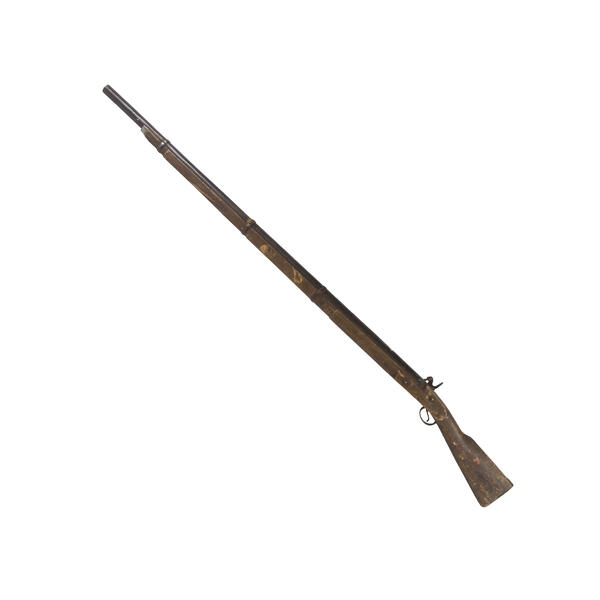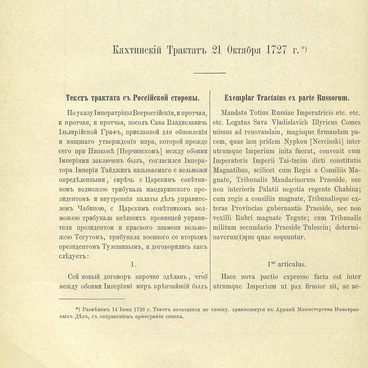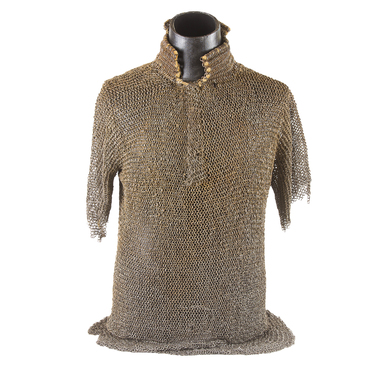A flintlock was a type of firearm with a piece of flint inside. When the trigger was pulled, the mechanism struck a wheel or a frizzen (a special steel plate), creating a spark, which ignited the gunpowder.
In the 16th–19th centuries, flintlocks were used all over the world. The Russians used guns with a caliber of 17.5 to 21.5 millimeters, weighing about 4 or 5 kilograms. Their shooting range was from 40 to 200 meters.
Another type was called a matchlock gun. There was a touch hole on its body. A burning rod was brought to it and the charge ignited. This method was less convenient: one had to have the match constantly lit and always have matches at hand.
The first explorers of Eastern Siberia used several varieties of firearms: arquebuses, muskets, rifles, as well as carbines, samopal guns (special guns used in Russia in the 17th century) and pistols. They had different mechanisms: both flintlocks and matchlocks. The weapons were brought from Moscow. The government sent large amounts to Tobolsk and Yeniseysk, from where they were distributed to other towns and ostrogs (small fortresses).
A musket is a large-caliber rifle — smoothbore, long and heavy. Its main feature was the buttstock, similar to the modern one, with a thumb rest. As a rule, muskets were brought to Russia from abroad. Because of the heavy body, such weapons could only be fired from a rest: from a log, a hillock or a fence.
Any other gun that was not a musket was called an arquebus. It was lighter and more often had a flintlock mechanism, for which it was not necessary to carry matches.
The pioneering explorers often moved through the taiga and crossed rivers. Thus, they needed a multipurpose weapon that could be used in field conditions and in high humidity. They installed flintlock mechanisms into matchlock muskets that were sent to them, ensuring that they worked even in wet weather.
In the early 19th century gunsmiths began to replace the flint mechanism with a caplock mechanism. Inside, it featured a primer — a soft container with a special substance that was ignited by a hammer.
In the 16th–19th centuries, flintlocks were used all over the world. The Russians used guns with a caliber of 17.5 to 21.5 millimeters, weighing about 4 or 5 kilograms. Their shooting range was from 40 to 200 meters.
Another type was called a matchlock gun. There was a touch hole on its body. A burning rod was brought to it and the charge ignited. This method was less convenient: one had to have the match constantly lit and always have matches at hand.
The first explorers of Eastern Siberia used several varieties of firearms: arquebuses, muskets, rifles, as well as carbines, samopal guns (special guns used in Russia in the 17th century) and pistols. They had different mechanisms: both flintlocks and matchlocks. The weapons were brought from Moscow. The government sent large amounts to Tobolsk and Yeniseysk, from where they were distributed to other towns and ostrogs (small fortresses).
A musket is a large-caliber rifle — smoothbore, long and heavy. Its main feature was the buttstock, similar to the modern one, with a thumb rest. As a rule, muskets were brought to Russia from abroad. Because of the heavy body, such weapons could only be fired from a rest: from a log, a hillock or a fence.
Any other gun that was not a musket was called an arquebus. It was lighter and more often had a flintlock mechanism, for which it was not necessary to carry matches.
The pioneering explorers often moved through the taiga and crossed rivers. Thus, they needed a multipurpose weapon that could be used in field conditions and in high humidity. They installed flintlock mechanisms into matchlock muskets that were sent to them, ensuring that they worked even in wet weather.
In the early 19th century gunsmiths began to replace the flint mechanism with a caplock mechanism. Inside, it featured a primer — a soft container with a special substance that was ignited by a hammer.



